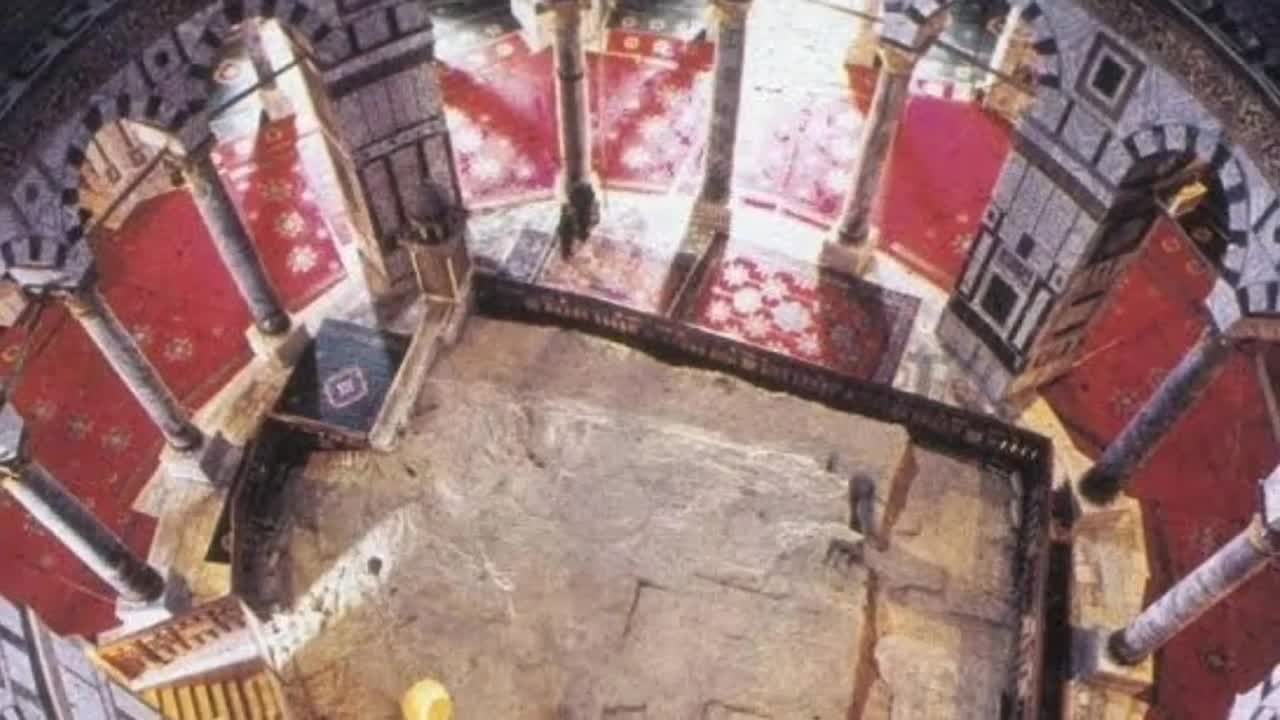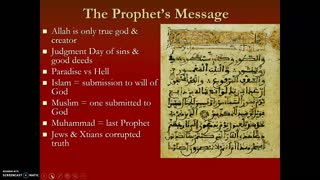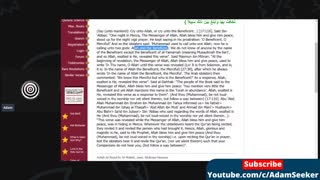Premium Only Content

Anachronism in Islam (isra miraj)
The Israʾ and Miʿraj (Arabic: الإسراء والمعراج, al-’Isrā’ wal-Miʿrāj) are the two parts of a Night Journey that, according to Islam, the Islamic prophet Muhammad took during a single night around the year 621. Within Islam it signifies both a physical and spiritual journey.[1] The Quran surah al-Isra contains an outline account,[2] while greater detail is found in the hadith collections of the reports, teachings, deeds and sayings of Muhammad. In the accounts of the Israʾ, Muhammad is said to have traveled on the back of a winged baby-horse-like white beast, called Buraq, (Arabic: الْبُرَاق al-Burāq or /ælˈbʊrɑːk/ "lightning" or more generally "bright") to "the farthest mosque". By tradition this mosque, which came to represent the physical world, was identified as the Al-Aqsa Mosque in Jerusalem. At Masjid-e-Aqsa, Muhammad is said to have led the other prophets in prayer. His subsequent ascent into the heavens came to be known as the Miʿraj. Muhammad's journey and ascent is marked as one of the most celebrated dates in the Islamic calendar.[3]
-
 0:49
0:49
Islamophobia Watch
4 years agoIslam is right about women?
2.62K12 -
 14:39
14:39
ProfessorPhillips
4 years agoIslam: Muhammad's Early Message
3898 -
 22:52
22:52
AdamSeeker
4 years ago $0.03 earnedWho is Allah of Islam - Part2
1.2K1 -
 32:34
32:34
AdamSeeker
4 years ago $0.08 earnedWho is Allah of islam - Part 4
1.2K1 -
 16:12
16:12
AdamSeeker
4 years ago $0.01 earnedWho is Allah of Islam - Part 3
1.17K1 -
 1:18:30
1:18:30
Sarah Westall
9 hours agoNew Study: EMFs Literally Put You into a Brainwave Cage; Reclaiming your Mind w/ Ian & Philipp
75.2K22 -
 35:54
35:54
SantaSurfing
9 hours ago4/7/2025 - Trump Tariff impacts - he wants no Capital Gains Tax! Inflation falls to 1.22%!
48K32 -
 59:17
59:17
We Like Shooting
20 hours ago $3.59 earnedDouble Tap 404 (Gun Podcast)
31.8K1 -
 10:06:28
10:06:28
ZWOGs
13 hours ago🔴LIVE IN 1440p! - GRAPHIC DESIGN, Schedule 1, TARKOV, GTAV RP!! | Dwindle Digby | - Come Hang Out!
27.2K -
 4:51:28
4:51:28
Meisters of Madness
9 hours agoThymeSia - Power of the Plague
20.5K